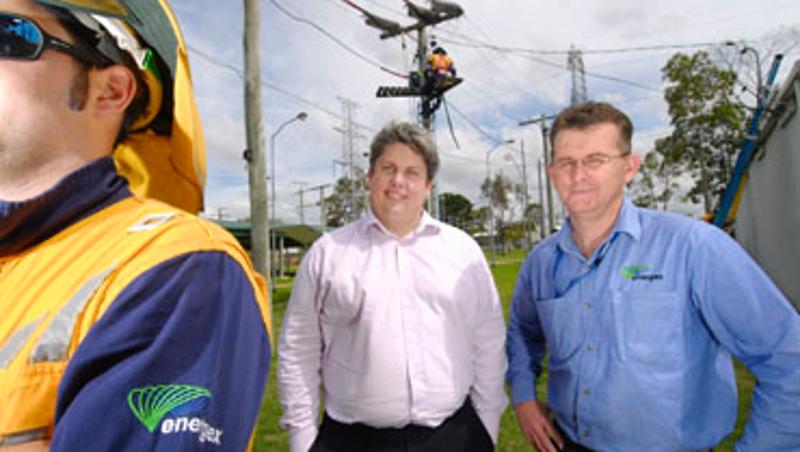
A badge that is not much bigger than a 50 cent piece has been developed by Queensland University of Technology to monitor the sun exposure of people working outdoors.
Associate Professor Michael Kimlin, from the Australian Sun and Health Research Laboratory based at QUT's Institute of Health and Biomedical Innovation, said UV exposure was a major issue for many Queensland workplaces highlighting the importance of employers and employees in adopting sun protection polices and practices.
He said from November 18 to 24 was National Skin Cancer Action Week, and it was important the sun safe message was not forgotten in the workplace, especially when so many people work outside.
"Outdoor workers have a higher risk of skin cancer given the amount of time they spend outside exposed to UV light whether that is from direct sunlight or reflected from surrounding surfaces such as buildings, water and surfaces," Professor Kimlin said.
"Not only can overexposure to UV light affect workers' health, it can also lead to reduced productivity, morale and lower financial returns for the company."
Professor Kimlin said the badge, which was made of a polymer material, degraded when exposed to sunlight.
"It works by undergoing a photochemical reaction when exposed to UV light and can easily attach to a person's clothing," he said.
"Using the badge we are able to measure the amount of sun exposure a person receives over a set period of time, whether that is an hour or a day, which is an important tool in the assessment of risk of exposure to UV radiation."
Professor Kimlin said while it was important to know the level of UV exposure, it was just as important to work with workplaces to provide sun safe policies for workplace.
"There are many strategies employers can implement to ensure their staff are sun protected, including wearing a hat, sunglasses, sunscreen, timing of outdoor activities and fit-for-purpose clothing," he said.
One of the organisation's which has been working with QUT researchers with the project is electricity company Energex.
Earlier this year a number of Energex employees began wearing the badges so that accurate measurements could be made of individual UV exposure levels as part of a research project conducted by Katja Saris, a QUT PhD student.
Energex safety adviser Brett Harrison said the company had a range of sun safety measures in place and was happy to join in the research program.
"The research involved employees wearing the QUT developed polymer badges for three consecutive days while carrying out a range of differing work tasks," said Mr Harrison.
"Employees were also surveyed before and after the research program to gauge their knowledge of skin cancer and the effect of UV exposure.
"Given the nature of much of our work, field staff are regularly exposed to the elements so Energex has a range of controls in place for our employees. These include supplying staff with long-sleeved work clothes, tinted eyewear, broad brim hats, sunscreen and helmets with neck flaps."
Professor Kimlin said the research had shown that Energex employees, while exhibiting differing knowledge of skin cancer risks, were in the majority adopting very good UV exposure control measures.
He said these practices were an example for others to follow in the field of UV exposure to its employees.
"This year around 200,000 people will be diagnosed with skin cancer and 1000 will die," he said.
"In Queensland, the sun is intense all year so we must protect ourselves from the sun whenever we can, especially at work."
To find out what the current UV rating is in Brisbane go to QUT's live online UV index at www.uv.qut.edu.au
Media contact: Rachael Wilson, QUT media officer, 07 3138 4494 or rachael.wilson@qut.edu.au
**High res images available


